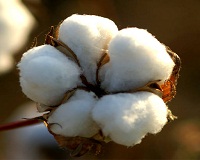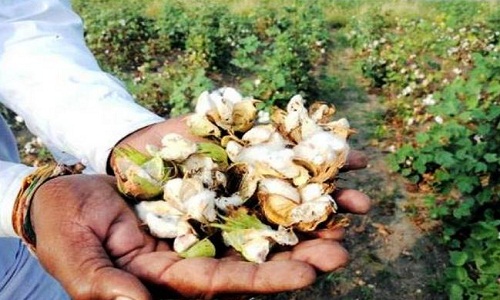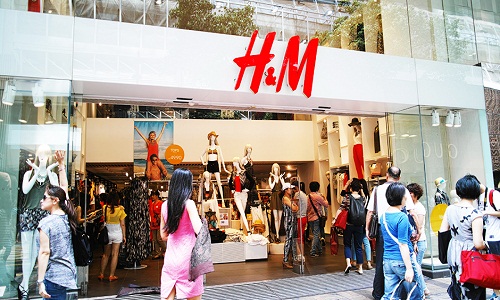FW
Italian textile machinery manufacturers will be present at Indo Intertex, Indonesia from April 4 to 7. The textile industry is a major driving force for Indonesia’s national economy. In recent years, the country has supported a widespread modernisation program of existing technology, allowing for increased exports in the garment industry, and making Indonesia the eighth largest exporter in this sector worldwide.
Over the course of the past few years, Indonesia has represented one of the primary markets in Asia for Italy’s machinery manufacturers. There was a 19 per cent increase in Italian machinery sold over the first nine months of 2017 compared to the same period for 2016.
Italy’s participation at Indo Intertex is part of an intensive program of trade initiatives aimed at promoting the Italian textile machinery industry in Indonesia. A total of 13 Italian textile machinery manufacturers will be present at Indo Intertex. Among the companies are Bonino, Busi, Caipo, Cognetex, Red Carpet, Santex Rimar, Sei Laser, Sicam, Ugolini.
Indo Intertex is a trade fair for the textile and clothing industry where machines for processing of textiles and related equipment including materials and raw materials will be exhibited. The latest materials, fabrics and garment accessories are introduced to Indonesian producers.
India’s footwear shipments to the US have fallen eight per cent in a year. Brazil’s footwear shipments to the US were down 13.8 per cent year on year. In 2017, the US’ imports of shoes fell 0.4 per cent from 2016.
While China remains overwhelmingly the dominant supplier, still commanding a more than 71 per cent share of US footwear imports, footwear imports from China fell 4.3 per cent in 2017 from 2016. Vietnam has a 17 per cent share of US footwear imports.
Indonesia is the third largest supplier of footwear for the US market. Its shipments last year saw a 3.62 per cent year-over-year gain. The country now holds a four per cent share of the market. In value terms, Italy, India, Mexico, Cambodia, Spain, the Dominican Republic and Brazil are among the top ten suppliers of footwear to the US. In terms of volume, China, Vietnam, Indonesia and Cambodia hold the top four spots.
Cambodia accounts for a 1.2 per cent share of overall US footwear imports. By value, footwear imports from Cambodia were up 6.8 per cent over 2016. Footwear shipments from Thailand also were up 21.2 per cent last year. For other footwear-making nations, costs drove up competition and ultimately lowered their shipments.
INDA, the association of the nonwoven fabrics industry, has five newly elected members on its board of directors. INDA’s strategic and governance affairs are managed through its board of directors. This governance is essential to the good stewardship of INDA members’ dues, INDA reserves, and the business of the association. The board of directors serves as fiduciaries of INDA’s finances and provides direction to its operating plans as well as counsel to the president. The board guidance supports INDA’s mission to conduct activities that enhance the success of the nonwovens industry and its members.
The board is responsible for reviewing the strategic plan, policies, programs, dues and operating procedures affecting the association’s 360 members. The 20-member board includes elected board officers and the immediate past board chair. One-third of the entire board is elected each year for a three-year term by a majority vote of INDA’s general membership.
INDA serves hundreds of member companies in the nonwovens/engineered fabrics industry in global commerce. Since 1968, INDA events have helped members connect, learn, innovate, and develop their businesses. INDA educational courses, market data, test methods, consultancy, and issue advocacy help members succeed by providing them the information they need to better plan and execute their business strategies.
H&M is the first fashion company to make its supplier network fully public. The company works with between 2,200 and 2,500 suppliers, including primary and secondary. It has mapped out all Tier I suppliers and has gotten through roughly 60 per cent of Tier II.
H&M is working on the traceability factor so consumers can follow each product as it evolves from, say, a boll of cotton to a thread to a fabric and finally into a finished garment. The need for fashion is to wake up to the reality of its environmental and social impact.
By 2030, H&M plans to source only sustainably produced materials, and it’s on track to meet its 2020 goal of using all sustainably sourced cotton. Garment and textile recycling has been a big push for H&M. Not only has the company partnered with Worn Again to tackle the challenge of separating polyester and cotton fiber from fabric blends, it has spearheaded a similar project with the Hong Kong Research Institute of Textiles and Apparel to develop a similar poly-cotton separation technique. One year later, HKRITA has a viable solution and is looking to scale as it sets up a factory and plans to make its approach open source by 2020.
UK menswear designer Craig Green will be guest designer at Pitti Uomo, June 12 to 15, Italy. He will present an exclusive runway show, featuring his spring/summer 2019 collection. He joins a list of celebrated guest designers, including JW Anderson, Paul Smith and Virgil Abloh of Off-White.
Craig Green’s collection reveals many of the critical success factors for those who make fashion today, specifically his ability to innovate menswear codes without losing track of the contemporary market’s dynamics. His style mixes workwear influences and futuristic shapes, sculptural silhouettes and function.
Craig Green established his namesake brand in 2012. His continuous exploration of the concepts of uniform and utility has become a highly anticipated fixture of the menswear calendar, and his style has resonated with a loyal customer base. He has won several awards.
Pitti Uomo is a leading men’s fashion and accessories trade fair. It will be attended by approximately 35,000 international professional visitors. The show will offer the latest trends in menswear, collections in 16 distinct sections, special events and countless business opportunities. Last year the event set yet another attendance record by gathering 1100 top brands and 20,000 buyers from all over the globe.
Gap wants its Tier I suppliers – approximately 800 factories in about 30 countries – to make the transition from a cash-based system to digital payments by 2020. More than 60 per cent of Gap’s supplier factories already provide digital payments methods, such as online transfers to bank accounts or mobile wallets.
By having suppliers pay garment workers digitally, Gap aims to accelerate the transition toward a more transparent workplace for the women and men who make its clothes. Gap’s approach includes developing and delivering training around topics like communication in the workplace, problem solving, grievance handling and effective negotiations for workers and managers; measuring and improving workers’ sense of value and sense of engagement at work by helping factories make well-being investments in their workforce; consolidating and publishing its Tier I supplier base to focus on partners that share the company’s values and sustainability goals.
Women make up 80 per cent of the world’s garment industry workforce. Electronic wage payment methods have the benefit of drawing previously unbanked workers into the formal financial system, allowing women greater control over their finances and a safer way to save, send money, and invest. At the factory level, suppliers benefit from cost savings, due to increased efficiency and speed.
India’s cotton exports have been gathered pace after global prices jumped to four-year highs. Increased supply from India could rally international prices and likely compete with shipments to Asia from exporters such as Australia, Brazil and the United States.
Bangladesh, Vietnam and Pakistan are aggressively buying from India due to lower prices. India has a freight advantage over others. India could export more than six million bales in the current season, up a fifth from previous estimates.
Indian merchants have contracted to export 4.7 million bales so far this marketing year, of which nearly 3.5 million have already been shipped. The country exported 5.82 million bales of cotton last marketing year. A depreciation in the Indian rupee has also boosted exporter profits, stoking the appeal of sending cargoes abroad.
The upturn in exports marks a change from just a couple of months ago, when lower global cotton prices meant there was little incentive to ship overseas. Demand from Pakistan, which resumed imports from India in January after making no purchases in the previous quarter, has been strong and the country could take as much as 8,00,000 bales this year. However, India’s production of cotton bales for 2017-18 may be down 1.4 per cent from an earlier estimate as the pink bollworm pest has hit some crops in key growing regions such as Maharashtra.
There has been a drastic 10.4 per cent decline in apparel production in India from April 2017 to January 2018. However, a 1.3 per cent growth was reported in apparel production in April 2017 which again saw a five per cent decline in the following month. June too witnessed a 3.2 per cent decline while July, August, September, October, November and December recorded a 5.1 per cent, 6.4 per cent, 7.2 per cent, 11 per cent, 13.1 per cent and 13.5 per cent decline respectively.
The decline has surfaced at a time when exports are already registering a weakening trend. A 14 per cent decline was seen in exports since January onwards. The industry is already struggling due to blocked funds which have resulted in delays in payments to the supplier on time. Suppliers too do not prefer advance as they cannot carry them for an indefinite period which ultimately resulted in a decline in apparel production.
Delays in RoSL disbursements and IGST refunds all have added to the woes of industry players. This situation would lead to difficulties in meeting the export target of $20 billion.
"The minister of state for environment, forest and climate change, recently told the Rajya Sabha, that since the introduction of Bt cotton in 2002, there has been a near doubling of cotton production in the country. However, cotton yields have stagnated in the past decade even as proportion of Bt cotton in India’s total cotton harvest rose seven times. Increased fertiliser and pesticide use led to a far-reaching health, environment and economic impacts for the country."

The minister of state for environment, forest and climate change, recently told the Rajya Sabha, that since the introduction of Bt cotton in 2002, there has been a near doubling of cotton production in the country. However, cotton yields have stagnated in the past decade even as proportion of Bt cotton in India’s total cotton harvest rose seven times. Increased fertiliser and pesticide use led to a far-reaching health, environment and economic impacts for the country.

Water Footprint Network, a global initiative for promoting fair water use estimates producing 1 kg cotton in India requires 22,500 litres of water, compared to the global average of 10,000 litres. The high water footprint for India’s cotton is due to inefficient water use and high rates of water pollution. At a time when 100 million Indians do not have access to safe water, the water India consumed to export cotton in 2013 would have been enough to provide an additional 100 litres of water to 85 per cent of India’s population. K R Kranthi, Head, International Cotton Advisory Committee’s technical information section, said in April 2012, Bt Cotton hybrids utilise more nutrients and water for higher yields and profits, therefore the soils are getting progressively depleted and need more nutrient recharging.
Figures tell a story
In 2015-16, cotton yields rose 2.5 per cent. In absolute numbers, India’s cotton harvests rose 40.2 per cent, from 24.1 million bales (a bale is 170 kg of cotton) in 2005-06 to 33.8 million bales in 2015-16, according to data from the Cotton Advisory Board. As proportion of Bt cotton recorded its first significant drop of nearly 9 percentage points in 2016-17, the yield rose 11.7 per cent and harvests rose 3.8 per cent even as area under cultivation fell 11.6 per cent. A good monsoon was the main reason for the higher yield, the Cotton Association of India suggested.
The Parliament Standing Committee on Science & Technology, Environment & Forests said, in its 301st report on ‘Genetically modified crops and its impact on environment’ government agencies have made attempts to portray a rosy picture with regard to the success of Bt cotton in the country, which actually is not the case. The most significant increase in India’s cotton yields took place in 2003-04 and 2004-05 when the yields went up 32 per cent and 18 per cent, respectively.
In 2017, India was ranked 32nd among countries in the ranking for highest cotton yield globally. Of the 31 countries ranked above India, only 10 use genetically modified cotton. Fertiliser use for cotton rose 128 per cent from 118 kg/ha in 2005-06 when Bt Cotton’s proportion in overall cotton was 11.7 per cent to 270 kg/ha in 2015-16 when Bt Cotton accounted for 83.33 per cent of India’s cotton.
Impact of fertilisers
In 2009, an investigation in Punjab revealed higher use of nitrogen fertilisers led to higher nitrate pollution in drinking water–up to 601.1 mg of nitrate per litre (mg/l) in one case. The World Health Organization has set the safe limit at 50 mg/l. Potential health impacts on human health include cancer of the digestive tract and blue-baby syndrome. Similarly, fertiliser overuse led to degradation of soil health, the United Nation’s Food and Agriculture Organisation (FAO) pointed out. The study also points to soil nutrient imbalances in each of the 15 agro-climatic regions of India and suggested that taxes be introduced to discourage excessive use of fertilisers, herbicides and pesticides.
2005-06 and 2018-19, budgetary allocation for fertiliser subsidies rose 280 per cent from Rs 18,460 crore to Rs 70,080 crore while only 35 per cent of fertiliser subsidies reach small farmers. As much as 55 per cent of India’s pesticide expenditure is on cotton, which is grown on about 5 percent of India’s cropland.
"A recent investigation has revealed the factories supplying material for garments to H&M, Asda, Next and Tesco are leaking toxic chemicals into rivers and environment. A report by campaign group, the Changing Markets Foundation says villagers in the area around a plant in India told investigators about cases of cancer, tuberculosis, reproductive problems, birth defects and stomach disorders. Investigators reported ‘visible and strong-smelling’ pollution, which had turned water dark red at multiple sites surrounding the plant in India, which supplies viscose."

A recent investigation has revealed the factories supplying material for garments to H&M, Asda, Next and Tesco are leaking toxic chemicals into rivers and environment. A report by campaign group, the Changing Markets Foundation says villagers in the area around a plant in India told investigators about cases of cancer, tuberculosis, reproductive problems, birth defects and stomach disorders. Investigators reported ‘visible and strong-smelling’ pollution, which had turned water dark red at multiple sites surrounding the plant in India, which supplies viscose.
An independent lab test of air samples taken outside Aditya Birla’s plant by the investigation team found the level of carbon disulphide, a toxic chemical used in viscose production was 125 times the World Health Organisation limit. Natasha Hurley, Campaign Manager, Changing Markets says workers inside the factory may have been exposed to far higher levels of carbon disulphide because the chemical is highly volatile, meaning that it quickly breaks down when exposed to air. The compan has denied all allegations.

With so much noise around evading norms, the plant was temporarily closed down by local authorities after 11 villagers were rushed to hospital with suspected carbon monoxide poisoning because of the factory. To support the company’s claim that it was appropriately treating run-off from the plant, the company supplied a photo of a plaque marking the opening in 1985 of an effluent treatment plant. But for the investigation agency, that’s not a solid proof. The company needs to show that they are properly measuring these chemicals, as well as the results of that monitoring and how that information is being shared with the authorities.
Changing Markets’ findings about the Nagda plant are supported by a local study by the Indian Institute of Soil Sciences which found effluents from the industrial area may have contaminated the Chambal River and the groundwater in nearby villages. Paul Roeland from the Clean Clothes Campaign demanded full transparency along the supply chain, coupled with proper inspections to begin to solve the problem. He said that due diligence on environmental and social protection is not an optional luxury but a fundamental duty of brands, suppliers, and investors, wherever production takes place.
Retailers take the sustainability pledge
To resolve the issue, Changing Markets has produced a roadmap for the industry with a series of steps to ensure that viscose production becomes more sustainable. After these allegations were flagged off to fast fashion retailers such as H&M, Asos, and Inditex, they pledged to meet the commitments contained in the roadmap which include mapping the full supply chain and ensuring regular, independent environmental checks. Asos says the company was committed to addressing the issue with our sustainable sourcing and environmental policies and by engaging with our suppliers to transition to closed-loop production. H&M officials also said they fully agree with Changing Markets on what actions need to be taken within the viscose production process. The company had signed up to the roadmap produced by Changing Markets to lessen the environmental impact of the industry and is accelerating its use of sustainable viscose alternatives. Next highlighted the issues are both complex and real and therefore, cannot be solved by any single party acting alone. Next is therefore seeking to join with others in the retail sector to work collaboratively on a long-term solution.












